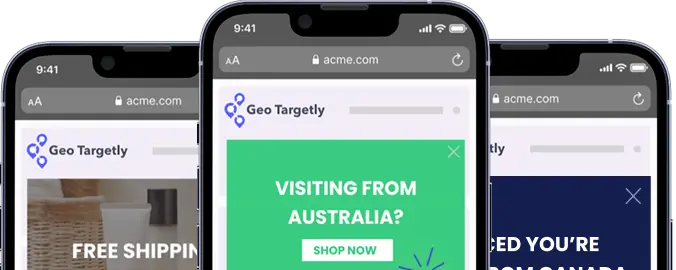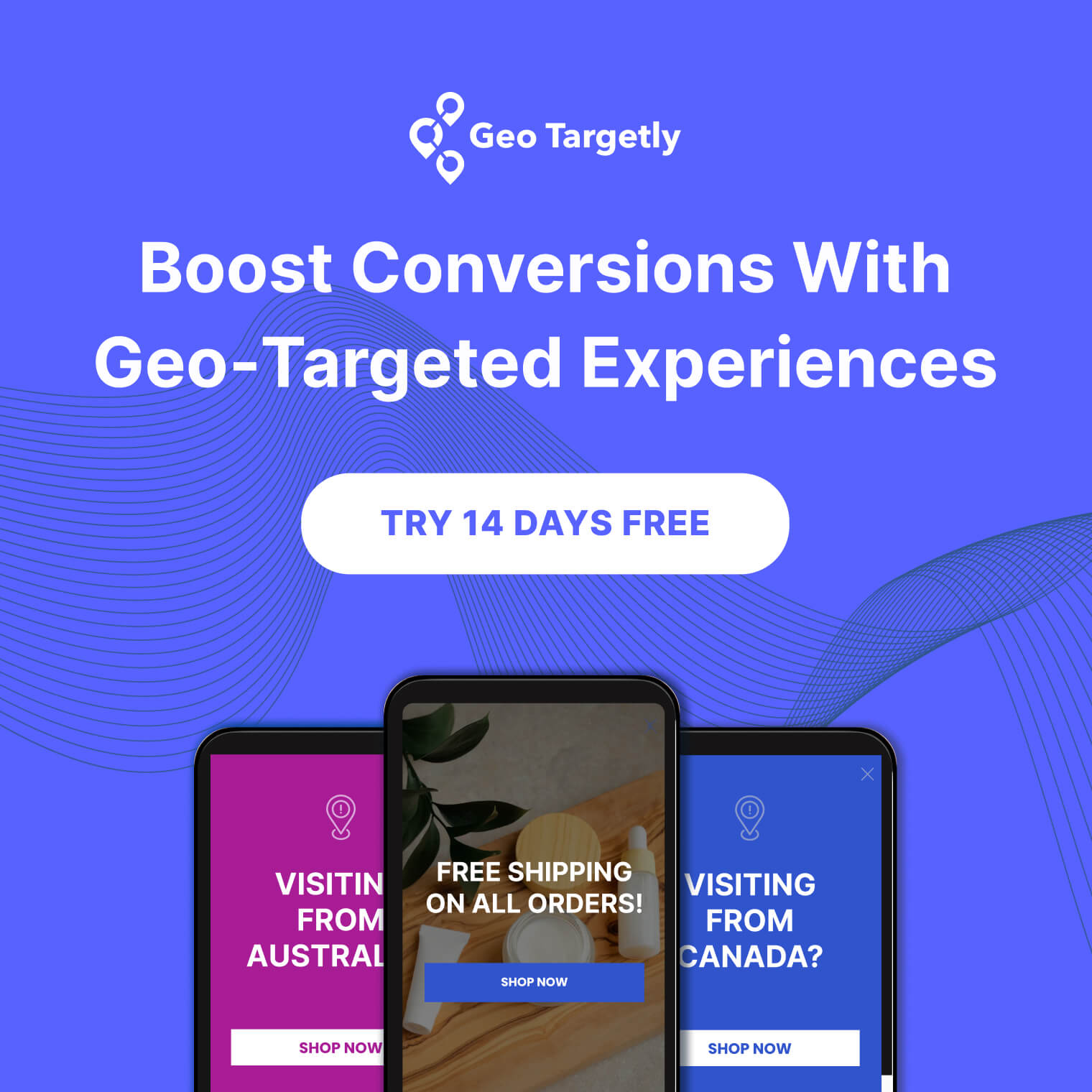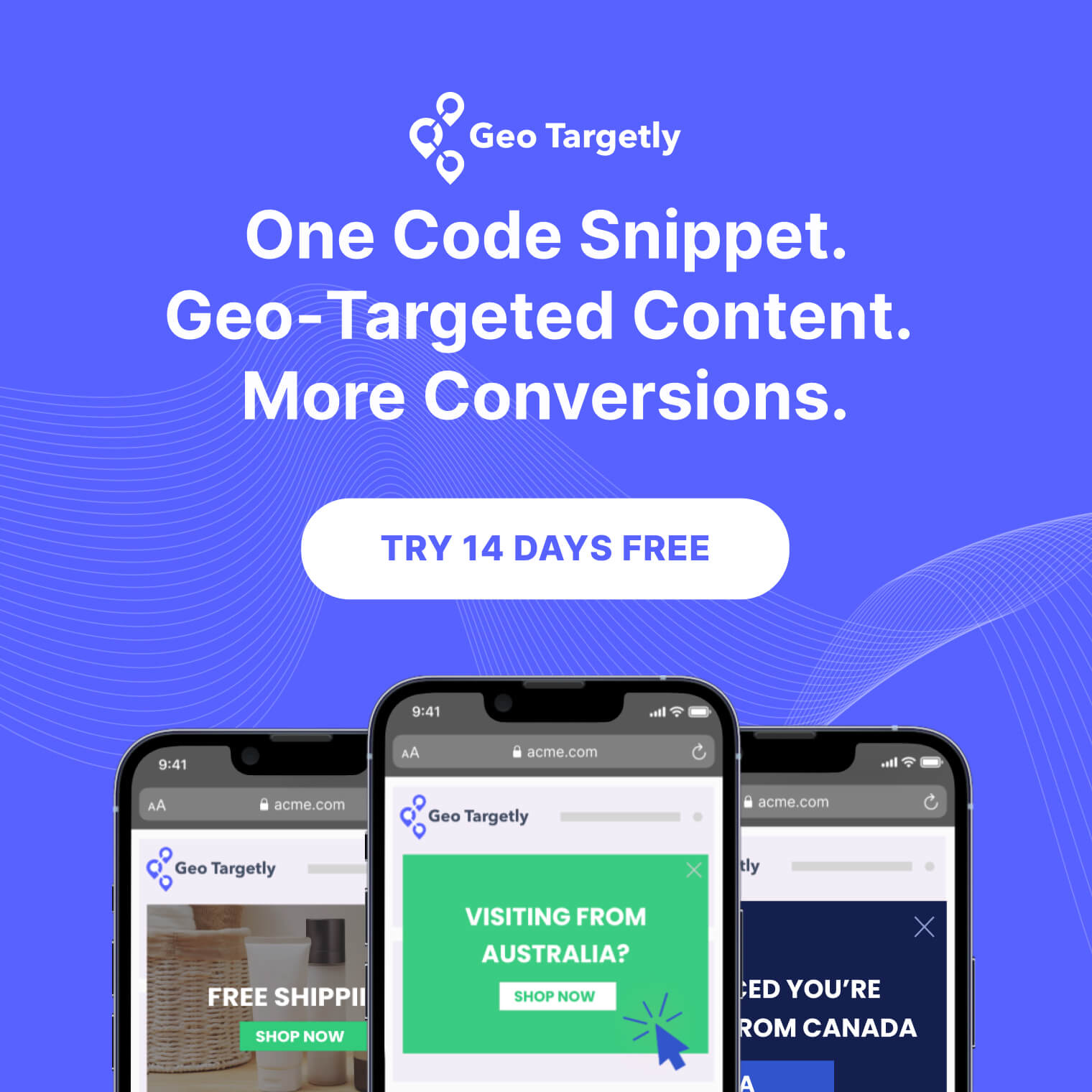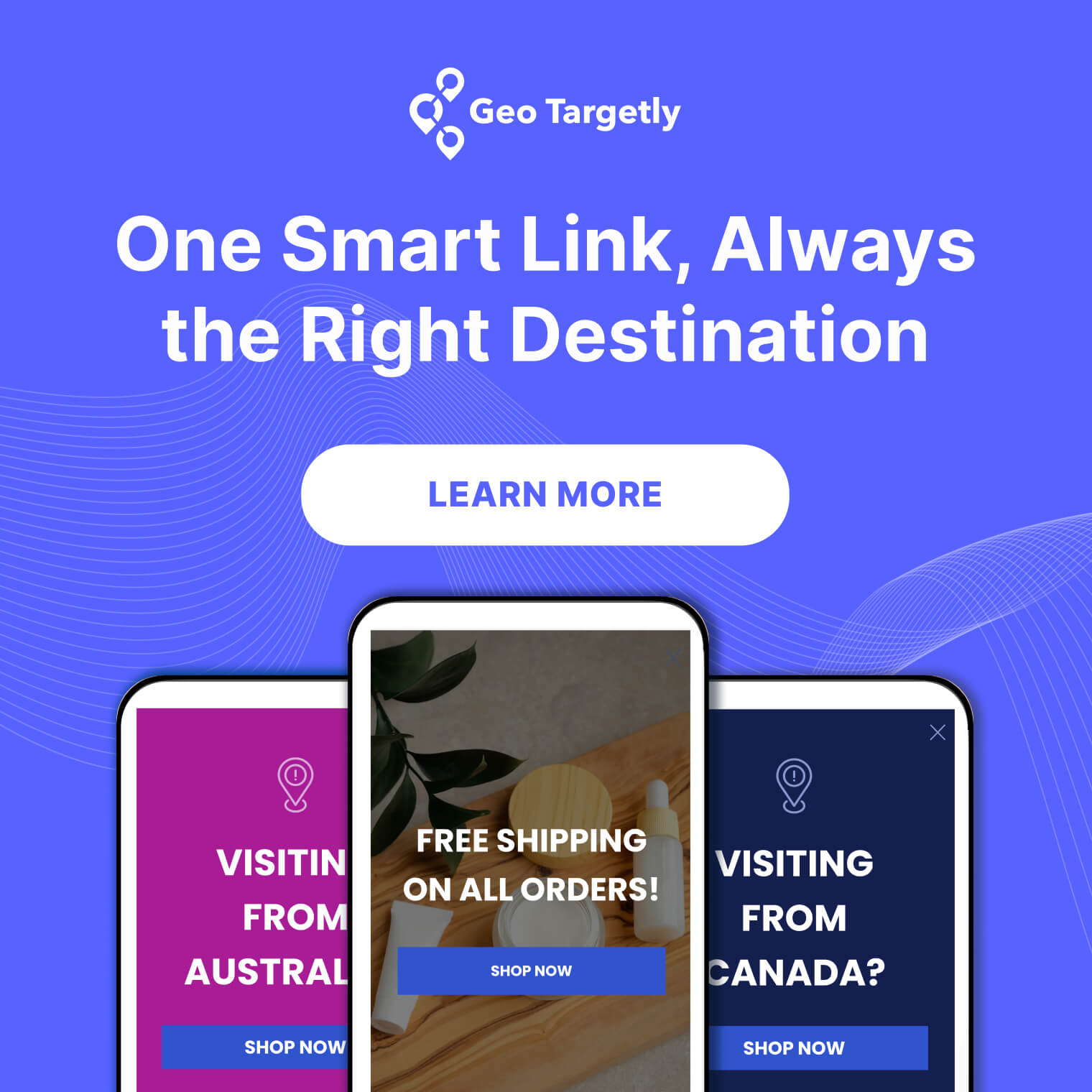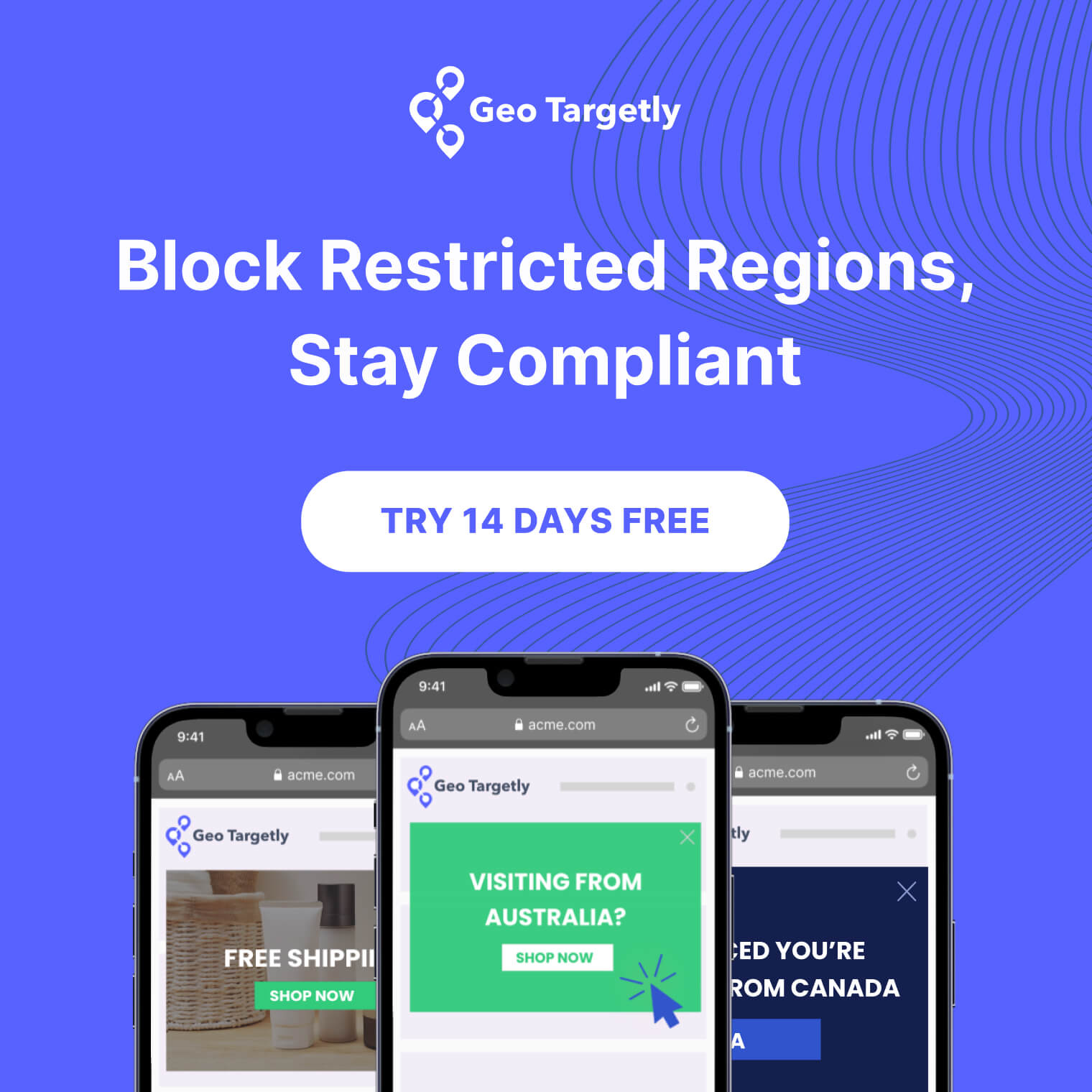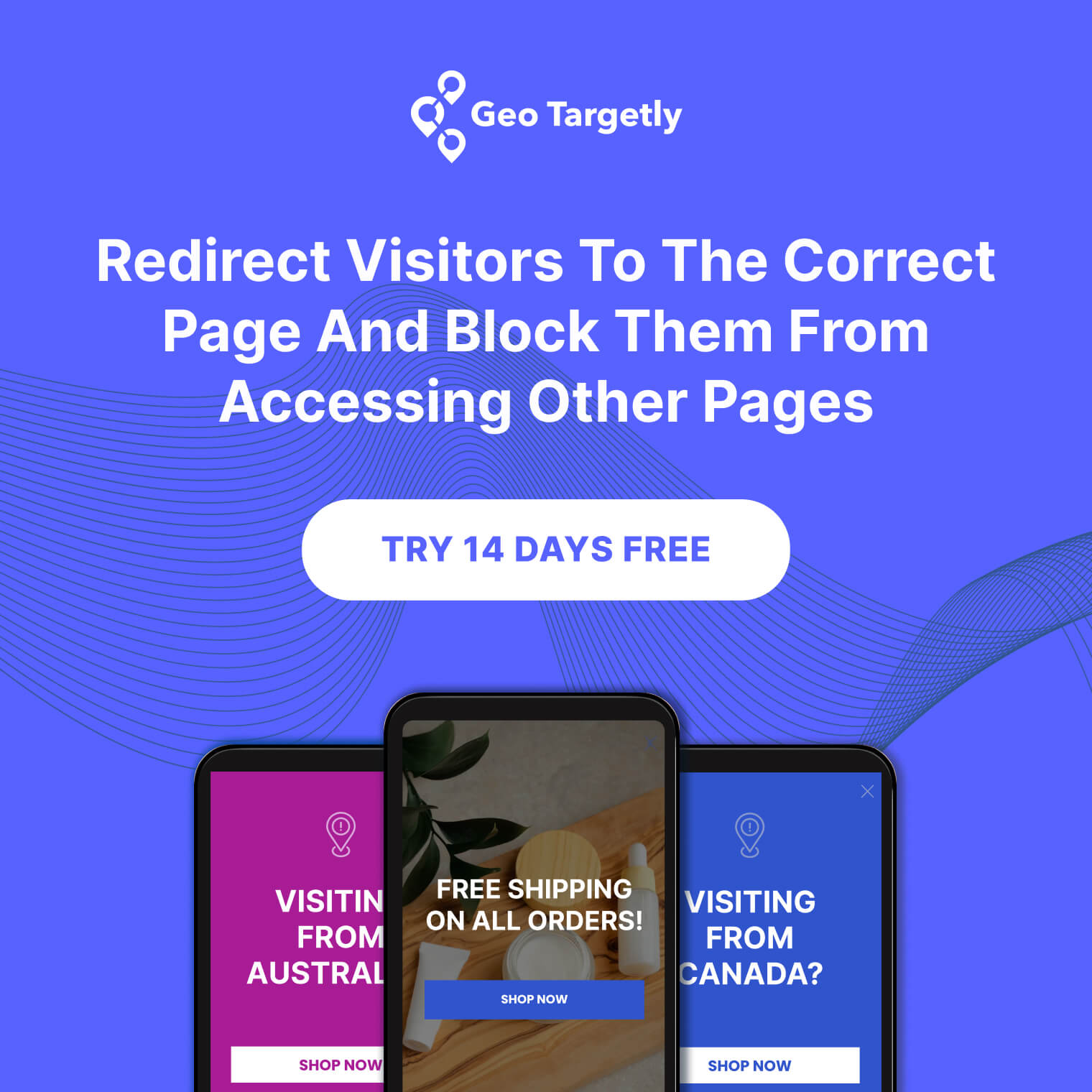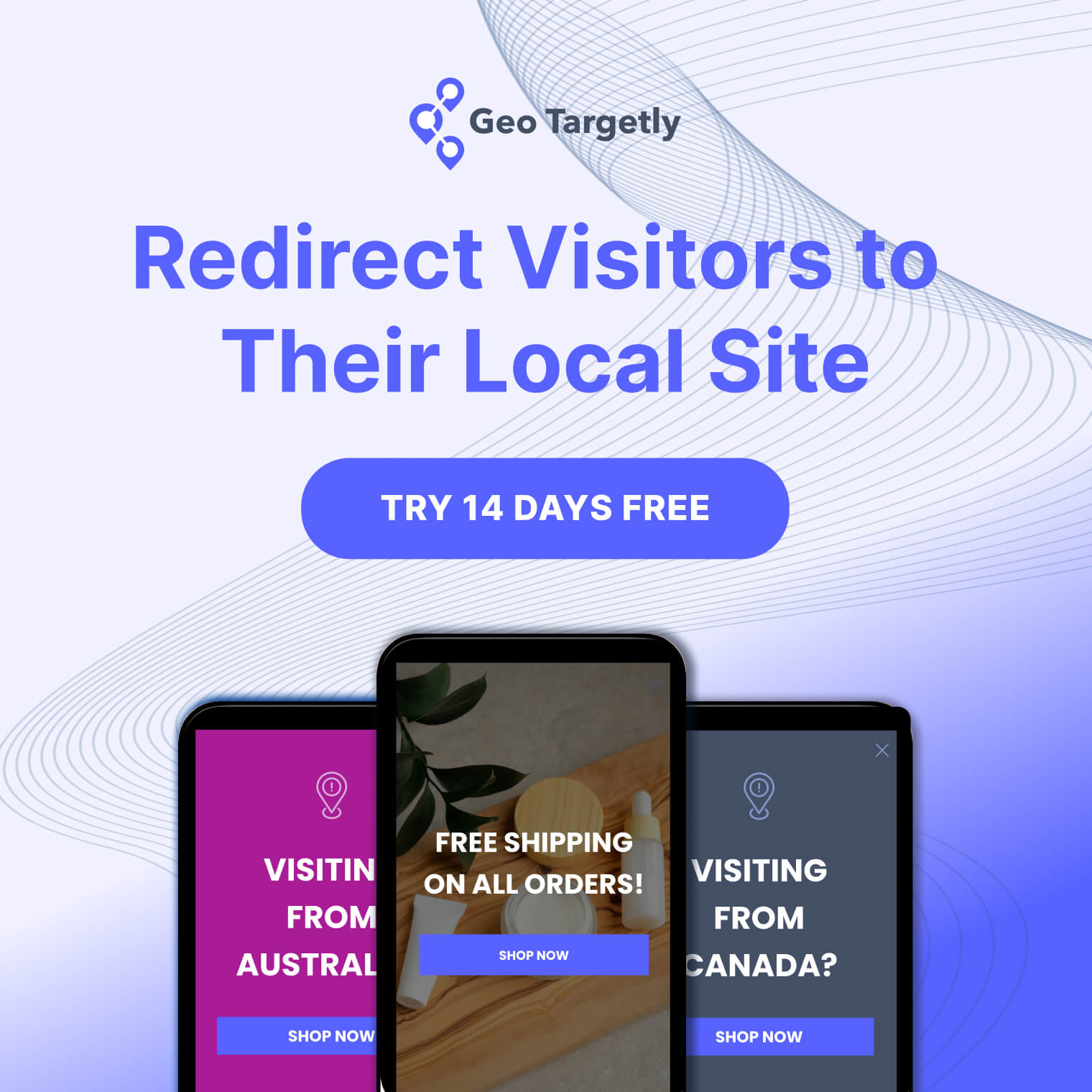

Key takeaways:
- How QR code redirects work and why they matter
- Static vs. dynamic QR codes: what’s the difference?
- Smart use cases across marketing, e-commerce, and events
- Step-by-step guide to setting up redirects
- Mistakes to avoid when using dynamic QR codes
QR codes have become a go-to tool for connecting the offline and online world. But once a static QR code is printed, its destination is locked. If a link changes, the code is useless, and that’s a problem for marketers running fast-moving or location-based campaigns.
A dynamic QR code solves this by letting you update the destination URL without reprinting. It also opens the door to more advanced uses, like routing users based on location, device, or campaign source.
This article breaks down how QR code redirects work, how to use them in real campaigns, and what to watch out for if you’re serious about tracking results and avoiding broken links.
Key takeaways
- How QR code redirects work and why they matter
- Static vs. dynamic QR codes: what’s the difference?
- Smart use cases across marketing, e-commerce, and events
- Step-by-step guide to setting up redirects
- Mistakes to avoid when using dynamic QR codes
Try Geo Targetly’s Geo Redirect tool to dynamically route users by location, device, or time, all with a few clicks.
What is a QR code redirect?
A QR code redirect sends users to a specific URL when they scan a QR code, but with one key difference: the destination can be changed without reprinting the code.
Instead of encoding a fixed URL, the QR code points to a dynamic link that redirects users to a target page. This flexibility makes QR code redirects useful for marketing campaigns, product packaging, event materials, and more.
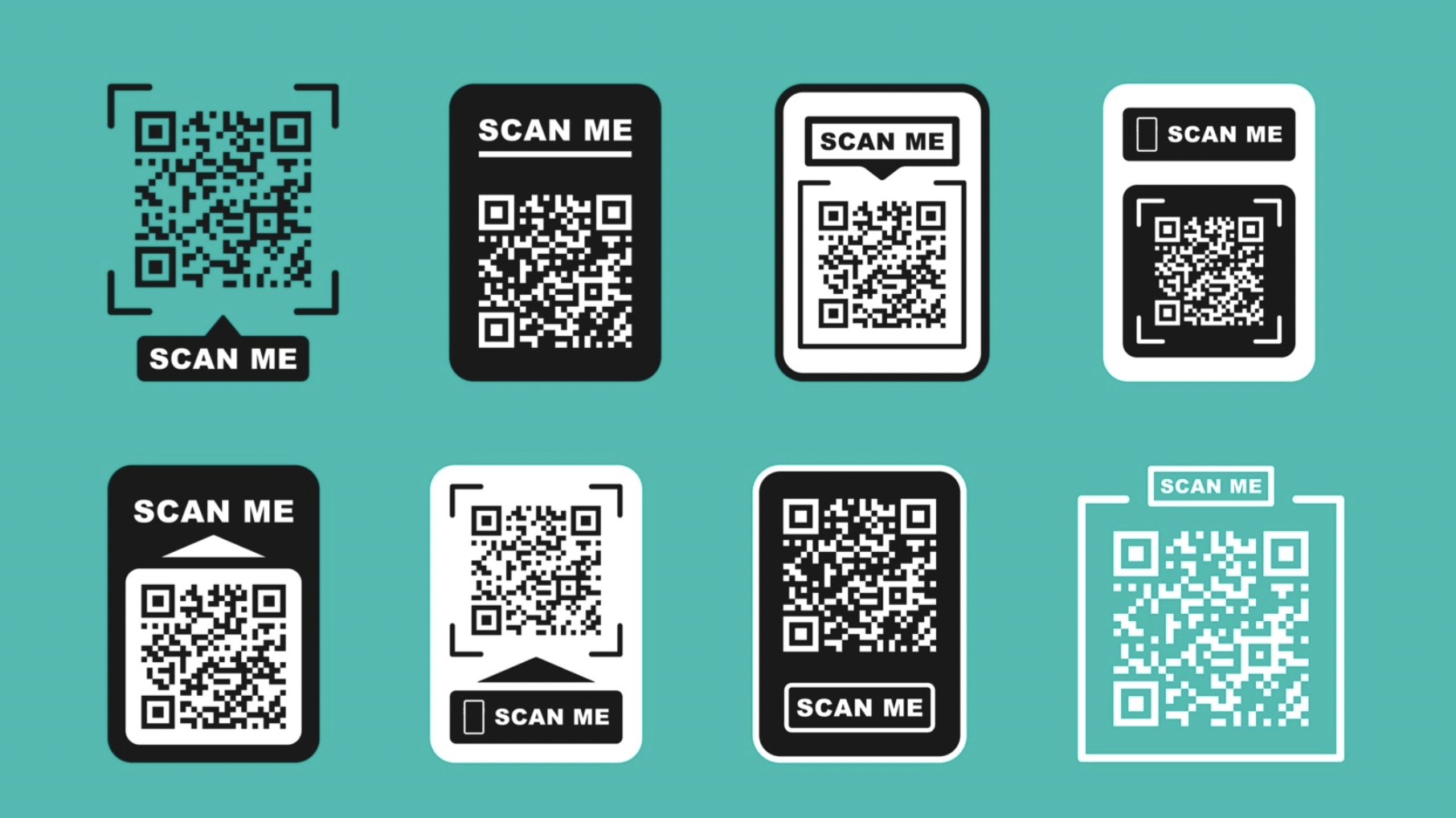
Static vs. dynamic QR codes
A static QR code contains a hardcoded URL. Once printed or shared, that URL can’t be changed. If the destination page goes down or the offer changes, the QR code becomes outdated or broken.
A dynamic QR code, on the other hand, points to a short redirect URL. That redirect can be updated at any time from a dashboard or API. The QR code itself stays the same, but users are sent to the new destination.
Say you print a QR code on 5,000 product boxes linking to a seasonal promotion. With a static code, once the campaign ends, the link becomes irrelevant.
But with a dynamic redirect, you can update the destination to a new offer or landing page without touching the packaging.
How does QR code redirection work?
Dynamic QR codes work by pointing to a redirect-enabled short URL, rather than a fixed destination. When someone scans the code, the process looks simple, but there’s more going on behind the scenes.
Here’s what happens:
- The user scans the QR code with their phone.
- The code opens a short URL (usually hosted by the QR provider).
- The provider’s server checks for any redirect rules (e.g. location, device, campaign source).
- Based on those rules, the server sends the user to the appropriate final URL.
This redirection happens in milliseconds, but it allows for far more flexibility than a static code.
Redirect types:
- 301 (permanent): Best for when the destination won’t change again. It passes SEO value and signals search engines to update their records.
- 302 (temporary): Used when the redirect is short-term, such as a seasonal campaign or A/B test. It keeps the original URL indexed.
Domain options:
- Most QR generators use provider-hosted short URLs (e.g. qr.link/xyz123).
- Some platforms let you connect a custom branded domain (e.g. yourbrand.link/deal1) for better branding and trust.
This setup gives you the ability to edit, monitor, and optimize your links without having to replace the printed QR code itself.
Benefits of using dynamic QR code redirects
Dynamic QR code redirects offer far more flexibility and control than static codes. Whether you're running a marketing campaign, managing multi-region content, or iterating on offers, dynamic redirects let you adapt in real time without reprinting or redistributing anything..
Update destination URLs without reprinting codes
One of the most practical benefits of dynamic QR codes is the ability to change the destination URL after the code has been printed or distributed. With static QR codes, the URL is hardcoded into the image, so if the link changes, the code becomes useless. That’s not the case with dynamic redirects.
This flexibility is especially useful for:
- A/B testing different landing pages
- Updating expired or time-sensitive promotions
- Reusing the same QR code across multiple campaigns
Personalize experiences based on context
Dynamic redirects also allow you to tailor the destination based on user attributes, such as location, device type, or language.
Here are a few examples:
- A global brand uses one QR code on product packaging, but redirects users to country-specific support pages based on their IP address.
- A restaurant chain prints a single QR code on menus, but directs Android users to the Google Play app and iPhone users to the App Store.
- An e-commerce brand links customers to a localized checkout page with the correct currency and shipping options.
This kind of targeting improves user experience and increases conversion rates by reducing friction and making content feel tailored.
Track performance and optimize campaigns
Another major benefit of dynamic QR code redirects is the ability to track usage and performance over time. Since the redirect passes through a managed platform, you can collect data like:
- Total scans
- Time and date of scans
- Geographic location
- Device type
- Referrer source
This data helps you understand how your QR campaigns are performing and where to optimize. For instance, if you notice most scans come from mobile devices in a specific region, you might prioritize mobile-optimized pages or run localized promotions.
Common use cases for QR code redirects
QR code redirection is especially useful when your printed materials need to stay flexible. Once a QR is out in the world, the ability to change where it leads becomes a huge advantage, saving both money and hassle.
Here are some everyday use cases:
- Flyers, posters, and packaging: Printed marketing doesn’t have to lock you into a single URL. You can update the destination later to promote new products, shift messaging, or track campaign results.
- Event marketing: If event details change, like a new registration link or last-minute venue update, you don’t need to reprint thousands of materials. Just edit the redirect behind the scenes.
- Menus and brochures: Many restaurants, hotels, and tourism businesses use QR codes for digital menus or welcome guides. A redirect lets you update seasonal offerings or service info without touching the printed code.
- Ecommerce campaigns: If a product goes out of stock or a discount expires, you can easily redirect traffic to a new page, updated offer, or alternative product.
- Real estate listings: Redirecting a QR code on a “For Sale” sign means you can update it to show the latest property or even reroute it to a contact form once the home is sold.
- Time-sensitive promotions: After a campaign ends, use the redirect to send users to a thank-you page, a survey, or your homepage instead of a dead link.
Whether you’re running national campaigns or managing local signage, dynamic QR redirects keep your content relevant even after the ink has dried.
Taking redirects further: Smarter QR routing strategies
Once you’ve mastered basic QR redirection, the real power comes from tailoring the destination based on who’s scanning and when. These advanced strategies let you create a more personalized, timely, and effective experience all from a single QR code.
Send people to the right version of your site based on location.
Running an international campaign? You can route users to country-specific or even city-specific landing pages using geolocation. Someone scanning in Berlin might see your German homepage, while a user in Toronto lands on your Canadian pricing page.
Adapt based on device or platform.
If your QR code links to an app, it’s easy to detect the device and send iOS users to the App Store, Android users to Google Play, and desktop visitors to a landing page instead. No need for clunky “choose your device” pages.
Switch destinations based on time.
Want your QR code to go to one page during the day and another at night? Or point to a live offer during the campaign period and then redirect to a thank-you page afterward? Time-based rules make it possible.
Run A/B tests with ease.
You can split traffic between two or more landing pages to test which layout, copy, or offer performs best without needing separate codes. Just track results and tweak accordingly.
Match language to browser settings.
Instead of forcing users to pick a language, smart redirects can detect the browser language and send visitors directly to the appropriate version of your content.
Each of these strategies helps squeeze more value out of a single printed QR code. And when combined with the right tools, they’re easy to set up – no developer needed.
A/B testing with QR redirects
Want to test which headline, layout, or offer converts best? QR redirects make A/B testing simple, even in printed campaigns. You can split users between two or more landing pages, all from a single QR code.
For example:
- 50% of scanners go to Landing Page A
- 50% go to Landing Page B
Then, track key performance indicators like bounce rate, conversion rate, or time on page to see which version performs better. You can manually adjust the split or automate it through your redirect provider’s dashboard. This is a powerful way to optimize print materials without needing different codes for each variation.
How to create a QR code redirect (step-by-step guide)
Creating a QR code that can redirect to different destinations after it's been printed is simple. Most dynamic QR code platforms follow the same process:
- Choose a dynamic QR code generator. Pick a platform that allows you to update the destination URL later. Some also offer tracking and advanced logic. Some choices are QRCode Monkey, QRStuff, and Beaconstac
- Create a QR code with a short redirect URL. The code points to a short link hosted by the provider. From there, you control where the user ends up.
- Print or deploy the QR code. Once it’s live, the destination can still be changed through your provider dashboard.
- Update the destination when needed. Log in any time to send users somewhere new. This is useful for rotating campaigns, A/B testing, or swapping expired links.
Best practices
• Use HTTPS to avoid security warnings
• Test the QR code on multiple devices
• Shorten long URLs to keep the code scannable
• Label your codes internally to track usage
Tracking and analytics with QR redirects
Once a QR code redirect is live, tracking how users interact with it becomes essential. Whether you're running a product campaign, event promotion, or location-based offer, knowing who scanned your code, where, and when helps you make smarter decisions.
Key metrics to track with QR redirects
At the core of QR redirect tracking are a few key metrics that reveal how your audience engages:
- Scans over time: Track how many times your QR code is scanned by day, week, or campaign period. This shows peaks in engagement and helps tie performance to specific marketing pushes.
- Geolocation of scans: QR redirects can capture the approximate location of each scan using IP-based geolocation. This is useful for region-specific offers or when testing location-based messaging.
- Device and browser data: Understanding whether users scan on iOS vs Android, or mobile vs desktop, helps tailor the post-scan experience. For example, you might redirect iOS users to the App Store and Android users to Google Play.
- Scan source: If you distribute the same QR code across multiple channels (flyers, packaging, in-store signage), use campaign parameters or unique codes to track where each scan originated.
These metrics give you a baseline view of performance, but the real value comes from combining them.
Using analytics to optimize campaigns
Once you have scan data flowing in, the next step is applying it to improve your campaigns. Here’s how teams typically use QR redirect analytics:
- Refining targeting: If a campaign gets more scans in one region than another, consider adjusting your ad spend or creative to focus on high-performing areas.
- A/B testing redirect destinations: Try sending half your traffic to one landing page and the rest to another. Compare bounce rates, conversions, or time on page to see which performs better.
- Improving timing: If scan activity spikes at certain times of day, schedule future campaigns to align with those windows.
- Validating offline efforts: QR redirect data can help prove the impact of print materials, in-store signage, or packaging. If a QR code on a product box drives traffic, you’ll see it in the scan logs.
The more you test and iterate, the more precise your campaigns become.
Integrating QR redirect data with other tools
To get the full picture, many teams connect QR redirect analytics with their broader marketing stack:
- Google Analytics: Append UTM parameters to your redirect URLs to track QR scans as campaign traffic in GA. This helps you attribute conversions and understand post-click behavior.
- CRM platforms: Use QR scans as triggers for lead capture or customer segmentation. For example, scanning a code at an event could add a contact to a specific nurture sequence.
- Custom dashboards: If you’re running high-volume campaigns, exporting scan data into tools like Looker or Tableau can help visualize trends across time, geography, and content types.
Privacy-safe tracking considerations
If you're collecting data through QR redirects, like location, device, or referral source, you need to consider privacy regulations such as GDPR (EU) and CCPA (California). Here's how to stay compliant:
- Avoid collecting personally identifiable information (PII) unless absolutely necessary.
- Use anonymized analytics that don’t tie data back to individuals.
- Inform users of tracking if your redirects are linked to personalized content or cookies.
- Provide opt-out options or link to your privacy policy from the landing page.
- Use Geo Consent to display location-based cookie consent notices
Most reputable QR platforms offer GDPR-compliant analytics, but it’s your responsibility to configure tracking ethically, especially for campaigns in regulated regions.
How Geo Targetly's Geo Redirect feature enhances QR code campaigns
When you’re working with QR codes destined for broad or global audiences, one size rarely fits all. Geo Targetly’s Geo Redirect tool gives you the ability to route users far more intelligently based on their context, and you don’t need to print new codes every time.
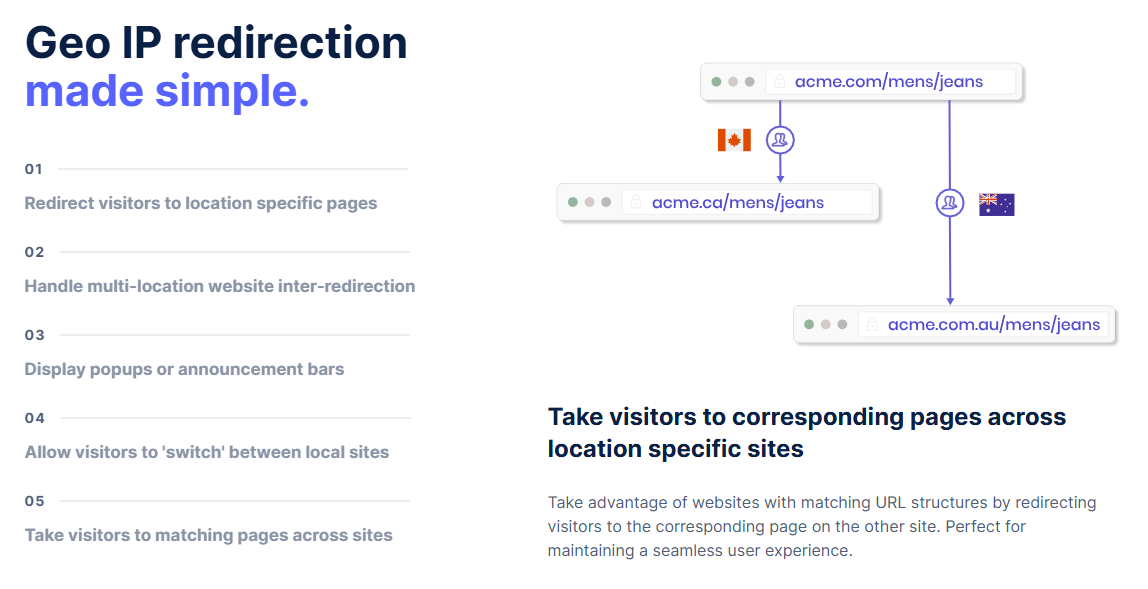
Here’s how it works and why it matters:
- Country or city‑based QR redirection
You print a single QR code and behind it you’ve set rules so visitors from different countries or even cities land on the right version of your content. Geo Targetly supports segmentation by country, state/region, city and IP range. - Device‑based routing (mobile vs. desktop)
You can detect whether someone scanned on mobile (iOS or Android) or desktop and send them to the fitting destination such as an app store or a desktop landing page. - Integration with any dynamic QR generator
You generate your QR using a dynamic‑URL provider, then route that link through Geo Targetly’s redirect logic. That gives you location‑aware or device‑aware forwarding without needing separate codes.
Benefits:
- Deliver localized offers or pages based on a user’s location like pricing in local currency, shipping options, language.
- Run a global campaign with one QR code. Reduce complexity and cost from managing multiple printed codes for each region.
- Improve conversion by showing region‑specific content. When users see a page built for their country or device, they’re more likely to engage.
Example scenario:
You use one QR code on global packaging. When a user in the United States scans the code, they’re redirected to yourbrand.com. When a user in France scans, they’re sent to yourbrand.fr. Both via the same underlying QR code, but two region‑specific UX flows.
Best practices for managing QR code redirects
QR code campaigns are only as effective as the user experience they deliver. These best practices help you create fast, secure, and reliable redirect flows.
Use HTTPS links
Linking to secure URLs avoids browser warnings and builds user trust.
Keep redirects short
Avoid long redirect chains. A single jump from scan to destination keeps things fast and smooth.
Use branded short domains
Custom domains help reinforce your brand and make links look more credible.
Check links regularly
Pages change. Campaigns end. Schedule periodic checks to make sure your QR codes still lead somewhere useful.
Test on multiple devices
What works on one phone might not work on another. Scan your codes using different devices and browsers to catch issues early.
Stay compliant
If you're tracking scans or personalizing content, make sure your redirects follow GDPR, CCPA, and other relevant data privacy laws.
Troubleshooting and common mistakes
Even small issues can break your QR code campaign. Here’s how to spot and fix the most common problems:
QR code not redirecting
Check that the URL is correctly formatted, the redirect type is set properly (301 or 302), and the short link hasn’t expired.
Page load feels slow
Long redirect chains or misconfigured rules can create delays. Simplify the path to the destination.
Analytics data missing
Make sure UTM parameters stay intact after the redirect. If you're using a dynamic QR tool, double-check the URL setup.
Short link expired or broken
Some free QR generators have expiration limits. Choose a provider that guarantees long-term link availability and uptime monitoring.
Conclusion
QR code redirects give you the flexibility to update destinations, test campaigns, and deliver more personalized experiences. They're a simple way to make offline marketing more dynamic and measurable.
If you're running campaigns across different regions or devices, smart redirect logic can help you show the right content to the right people.
Ready to make your QR codes smarter?
Use your favorite dynamic QR code generator, then route scans through Geo Targetly’s Geo Redirect tool to send users to the right page based on their location, device, or language. No extra QR codes. No reprinting.





.webp)



